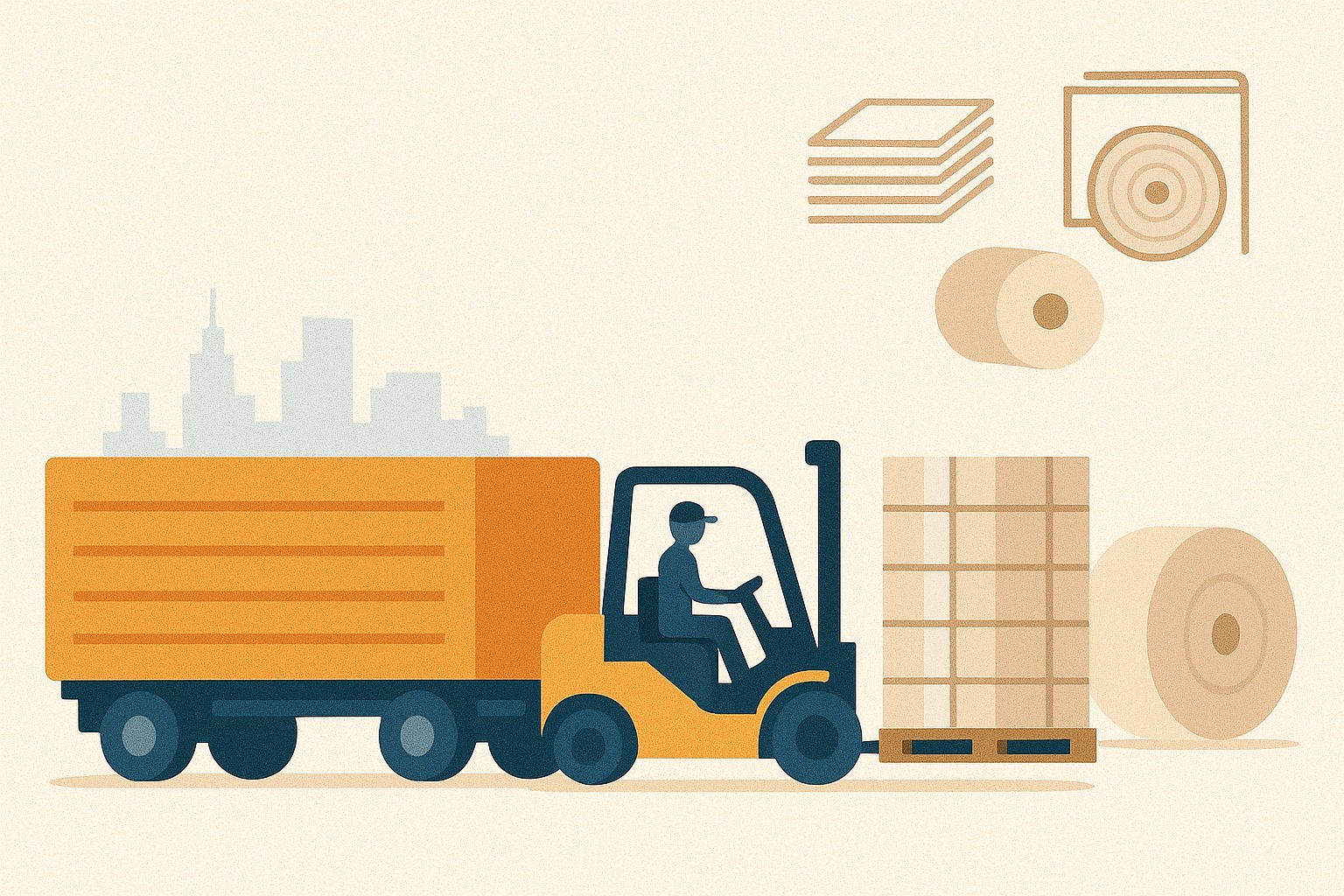Shipping paper rolls requires careful consideration of various factors to ensure that the product arrives at its destination without damage. This guide provides an overview of the best practices for shipping paper rolls, including packaging, transportation, and cost-saving strategies.
Understanding Paper Rolls
Paper rolls are large, cylindrical spools of paper used in industries such as printing, packaging, and manufacturing. They vary significantly in size, weight, and material—ranging from lightweight tissue rolls to heavy newsprint rolls up to 10,000 lbs. For example, coated paper rolls for high-quality printing may require moisture-resistant packaging, while kraft rolls for packaging need robust handling to prevent edge damage. Understanding your roll’s specifications—core size, weight, and sensitivity to environmental factors—is crucial for selecting the appropriate shipping method and packaging materials.
Choosing the Right Shipping Method
The shipping method you choose for transporting paper rolls significantly affects the overall cost, speed, and safety of the shipment. Here are the most common methods:
- Truckload: Ideal for large quantities, truckload shipping offers a dedicated truck with a direct route to the destination, minimizing handling and reducing the risk of damage. This method is perfect for high-volume shipments like newsprint rolls for publishing houses.
- Less Than Truckload (LTL): For smaller quantities, LTL is cost-effective, as your paper rolls share truck space with other shipments. However, increased handling may require extra packaging to prevent damage.
- Rail Freight: For long-distance shipments, rail freight is economical and eco-friendly, especially for bulk orders. It may require transferring rolls to a truck for final delivery, which could add time but reduce costs by up to 20% compared to truckload for cross-country routes.
- Intermodal: Combining rail for long hauls with truck delivery for the last mile balances cost and speed, making it a smart choice for cross-country or international shipments.
Selecting the right method depends on your shipment size, budget, and delivery timeline.
Packaging Considerations
Proper packaging is essential to protect paper rolls during transit and prevent costly damage, such as edge dents or moisture exposure. Here are some best practices:
- Use sturdy wooden or composite pallets rated for at least 1.5 times the roll’s weight to ensure stability.
- Wrap each roll in protective material, such as recyclable kraft paper or moisture-resistant stretch film, especially for coated rolls prone to water damage.
- Secure rolls with heavy-duty straps or bands to prevent movement during transit.
- Use corner protectors to safeguard edges, which are particularly vulnerable to damage that can render rolls unusable.
Opting for sustainable packaging, like recyclable kraft paper or reusable pallets, aligns with growing industry demand for eco-friendly practices and can enhance your brand’s reputation.
Cost-Saving Strategies
Shipping paper rolls can be expensive, but strategic planning can significantly reduce costs:
- Consolidate Shipments: Combine multiple LTL shipments into a single truckload to save up to 30% on freight costs.
- Optimize Packaging: Reduce weight and dimensions with efficient wrapping techniques to lower freight charges. For example, using lightweight, high-strength stretch film can cut costs without compromising protection.
- Schedule During Off-Peak Times: Avoid peak seasons, such as holiday periods, to secure better carrier rates.
- Leverage Freight Management Tools: Use software to analyze routes and carrier rates, optimizing load consolidation and potentially saving 10-15% on shipping costs.
- Negotiate Carrier Contracts: Secure volume discounts by building long-term relationships with reliable carriers.
Implementing these strategies, combined with real-time tracking to monitor shipment conditions, ensures cost-effective and reliable delivery.
Conclusion
Shipping paper rolls demands careful planning to ensure efficiency and product integrity. By understanding the unique characteristics of your paper rolls, selecting the optimal shipping method, adhering to robust packaging practices, and employing cost-saving strategies, you can streamline your logistics process. With Freight Sidekick’s tailored solutions and extensive carrier network, you can achieve cost-effective, on-time deliveries, whether shipping domestically or internationally. Trust our expertise to navigate the complexities of paper roll logistics successfully.
Personalized Assistance
Get a quote today, call 877-345-3838, or email support@freightsidekick.com.











